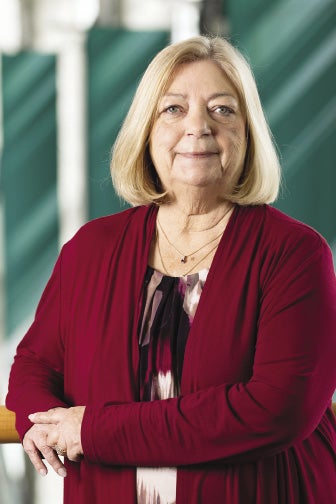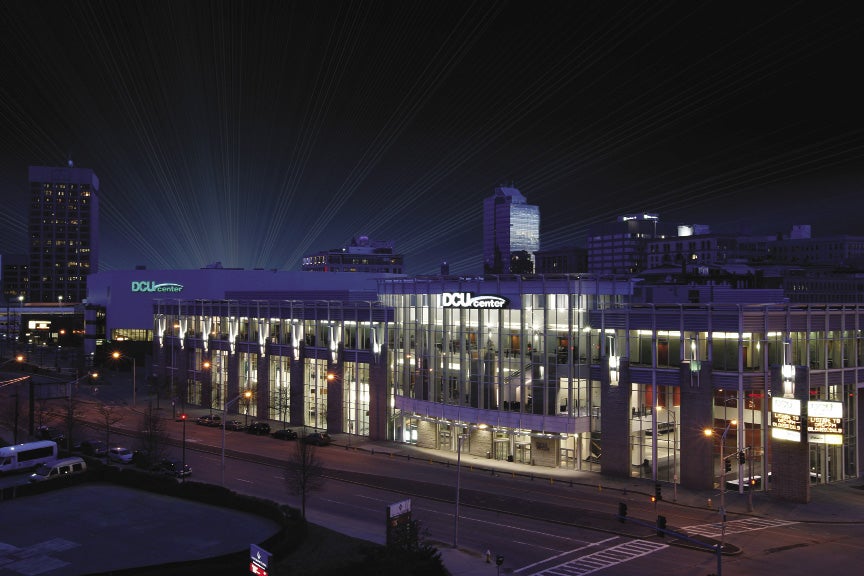Tracking Central Massachusetts tourist locations’ decisions and challenges – and how they handled them over the last three decades – is an exercise in business strategy. How do you get people to keep coming to your attraction?
Get Instant Access to This Article
Subscribe to Worcester Business Journal and get immediate access to all of our subscriber-only content and much more.
- Critical Central Massachusetts business news updated daily.
- Immediate access to all subscriber-only content on our website.
- Bi-weekly print or digital editions of our award-winning publication.
- Special bonus issues like the WBJ Book of Lists.
- Exclusive ticket prize draws for our in-person events.
Click here to purchase a paywall bypass link for this article.
Tracking Central Massachusetts tourist locations’ decisions and challenges – and how they handled them over the last three decades – is an exercise in business strategy. How do you get people to keep coming to your attraction?
More than 3.5 million guests visited New England Sports Center in Marlborough; Wachusett Mountain Ski Area in Princeton; indoor water park Great Wolf Lodge New England in Fitchburg; and Worcester’s Polar Park and DCU Center in 2023, according to the Worcester Business Journal 2024 Book of Lists.
So, what has made these destinations draw crowds over the past 35 years?
And what’s ahead?
Unique operations
Standout superstars Wachusett Mountain, DCU Center, and New England Sports Center have survived the pandemic, industry challenges, and destination trends through a common focus, according to Monique Joseph, president of Discover Central Massachusetts.
“These three have shown exceptional ability to innovate while staying true to their core strengths,” Joseph said. “Their forward-thinking approach has not only helped them navigate challenges like the COVID-19 pandemic but has also allowed them to thrive in a competitive market. By remaining deeply connected to their communities and continuously enhancing their offerings, these destinations have managed to retain and even grow their appeal.”
This is true even when you have a formidable enemy in Mother Nature.
Mountain mama
Jeff Crowley’s late father Ralph Crowley Sr. began leasing the ski mountain in the 1960s. Each year, Crowley said, the destination initiates a $2-million capital expenditure program.

Run by Jeff and his siblings, Carolyn (Crowley) Stimpson and David Crowley, Wachusett Mountain has 27 trails, eight ski lifts, and 100 percent snowmaking ability – it also has climate change as a constantly evolving problem.
“Climate change is why we are having so many rain events – 23 last year,” said Jeff Crowley, president of Wachusett Mountain. “It makes it hard to get psyched up to go ski. But it’s a good experience in some respects. People can have a great experience, as they have the mountain to themselves.”
So, it’s not so much the need to have snow to operate the ski mountain anymore that’s the problem, says Crowley, it’s a perception among some that natural snow is needed to ski.
In fact, he says, man-made snow is better for skiing and lasts longer.
“We’re spending (a) half-million dollars this year on fan-type snowmaking units to enable us to get the place open on a timely basis,” said Crowley, with the technology becoming more energy efficient and better for the environment.
“It’s more dense and less apt to melt,” Crowley said of man-made snow. “Natural snow is beautiful, but doesn’t last as long.”
Snowmaking operations, along with the mountain's webcams, were added by the Crowley family over the years. “We were webcam early adopters,” Crowley said. “It allowed people to go online and see ski conditions before heading out.”

Mount Wachusett – which had its trails cut in 1937 as part of a government program – will have its oldest lift replaced by a high-speed, six-pack lift next year, offering nine-second spacing in between each carrier, with auto-closure and auto-locking mechanisms. “It has the same capacity as a high-speed quad that would be loaded every six seconds,” Crowley said.
Another investment Mount Wachusett is making this year is replacing its circa-1960s skier services building, a project in the final planning stages.
Investment and improvement decisions – such as new lifts and building renovations – can come from customer feedback; anonymous surveys with management; and social media comments. Some upgrades aren’t as apparent to visitors, such as new software systems and well-pump replacements, Crowley said.
COVID constraints
During the pandemic, Wachusett Mountain did its best to accommodate the state’s mandate that it cut its capacity in half. It worked to find ways to enable more people to visit the mountain and get out of the house. It sold 4-hour blocks and 8-hour blocks.
“Our high-speed lifts got them a lot of vertical time,” Crowley said.
The DCU Center, meanwhile, was highly impacted by COVID, said general manager Sandy Dunn of ASM Global, the venue management company that oversees the 14,000-seat arena and 50,000-square-foot convention center.

The venue – owned by the city of Worcester since it opened in 1982 – was far from empty during the pandemic, serving as a UMass Memorial Health Care field hospital in the spring of 2021 for patients with minor coronavirus cases, to free up hospital space.
Over the years, the DCU Center has significantly expanded its ability to consistently book acts, Dunn said. With more competition in the marketplace, a company with ASM Global’s reach is a distinct advantage. “Without a consortium, a venue would be adrift now, finding it difficult to compete. Our team has 300 facilities and is the largest in the world. You need that kind of power in the industry,” Dunn said. “Artists are drawn to a global industry.”
The sheer number of venues now is a challenge, Dunn said. “There are only so many artists coming into a venue of our size. Back in the 1980s? It was just the [Boston] Garden and us.” Now, MGM Music Hall at Fenway, Great Woods (now the Xfinity Center) and other venues are in the running as well.
But along with tougher competition came an opportunity, and the DCU Center jumped into the ring – or rather rink – with professional hockey.
IceCat magic
The DCU Center – known until 1997 (and still to many) as the Worcester Centrum – hosted the Worcester IceCats for more than a decade when the Springfield Indians American Hockey League franchise moved to the city in 1994 and stayed until the end of the 2004-2005 season. The advent of higher-level professional sports brought a new revenue opportunity, Dunn said.
The AHL Worcester Sharks took the baton from the IceCats and played there from 2006 to 2015, while the ECHL Worcester Railers have made the DCU Center home since 2017.
“Minor league hockey showed it could exist and thrive. Now over 20 years in Worcester, it’s made a difference on our calendar,” she said.
More space made a difference, as well.

Construction was completed in 1997 on a convention center with 50,000 square feet of exhibit space. This meant that lawn-and-garden-type shows could now move from the arena and into the convention center, which freed up the arena for other shows, said Dunn.
“We used to have to say no to certain consumer and trade shows as we could not accommodate. When the convention center was built, it created new business for the city and economic spinoff where folks could eat, stay, come in early and go to the attraction,” Dunn said.
The city will be putting out a bid to replace the arena sound system. The last upgrade was about 30 years ago, Dunn said. All the arena seats were replaced in 2023 for $7 million, the third seat replacement project since the arena was constructed.
Not keeping opportunities on ice
Hockey has been advantageous to the DCU Center, and it’s a game New England Sports Center founder Larue Renfroe calls “addictive,” having coached it for more than 40 years.
Renfroe also served as general contractor for NESC’s construction in 1994.

The center began with four rinks for program teams, Renfroe said. “The facility helped to promote the game of hockey. It was just a 501(c) then, but we wanted to make money. To make money, you have to have ice.”
Tournaments continued, but it became harder and harder to get ice time, Renfroe said. “The business grew, and we had to add rink after rink, including smaller rinks for goalie training – all in response to demand.”
With a total of 10 rinks, including those added in 2004, 2010 and 2017, the center is the largest venue for hockey, figure skating, and public skating in North America. It has eight full-size rinks, one small, and one studio rink. A pro shop, two restaurants, and video arcade round out the offerings.
NESC hosts more than 50 hockey events annually, from all over North America. It is home to learn-to-play programs; development programs; and the Minuteman Flames and Lady Flames Minor Hockey Associations.
Demand drove the addition of each rink, Renfroe said, and the kind of programming, such as girls playing hockey.
But skaters and hockey players have to eat, too.
“We realized our original restaurant, which served breakfast and lunch, had a dinner menu that was the same as lunch and we needed more. We are a family destination. It constrained us, from a restaurant standpoint,” Renfroe said. New England Seafood opened at NESC in 2019.

Reinventing itself
Now, said Jason Silbor, NESC general manager, with a great chef onboard, diners come in from outside – especially for New England Seafood’s chowder.
But with underutilized space, the facility wants to expand catering and events as another source of revenue. It’s a realm where there is definite potential.
NESC hosted a Marlborough Regional Chamber of Commerce dinner for 150 people in April. “We offer a nice venue, with about 40,000 to 50,000 square feet,” Renfroe said, with only about an eighth of that space used.
It’s now successfully bringing in another profit stream and another segment of the community that otherwise might not visit NESC.
Joseph, of Discover Central Massachusetts, called moves like DCU Center’s addition of the convention center; NESC’s branching into event hosting; and Wachusett Mountain’s strategic improvements wise and far-reaching.
“Each [organization] made significant strides in enhancing visitor experiences, adapting to changing consumer preferences, and investing in infrastructure to remain competitive,” she said.
All make the region socially vibrant and economically resilient.
